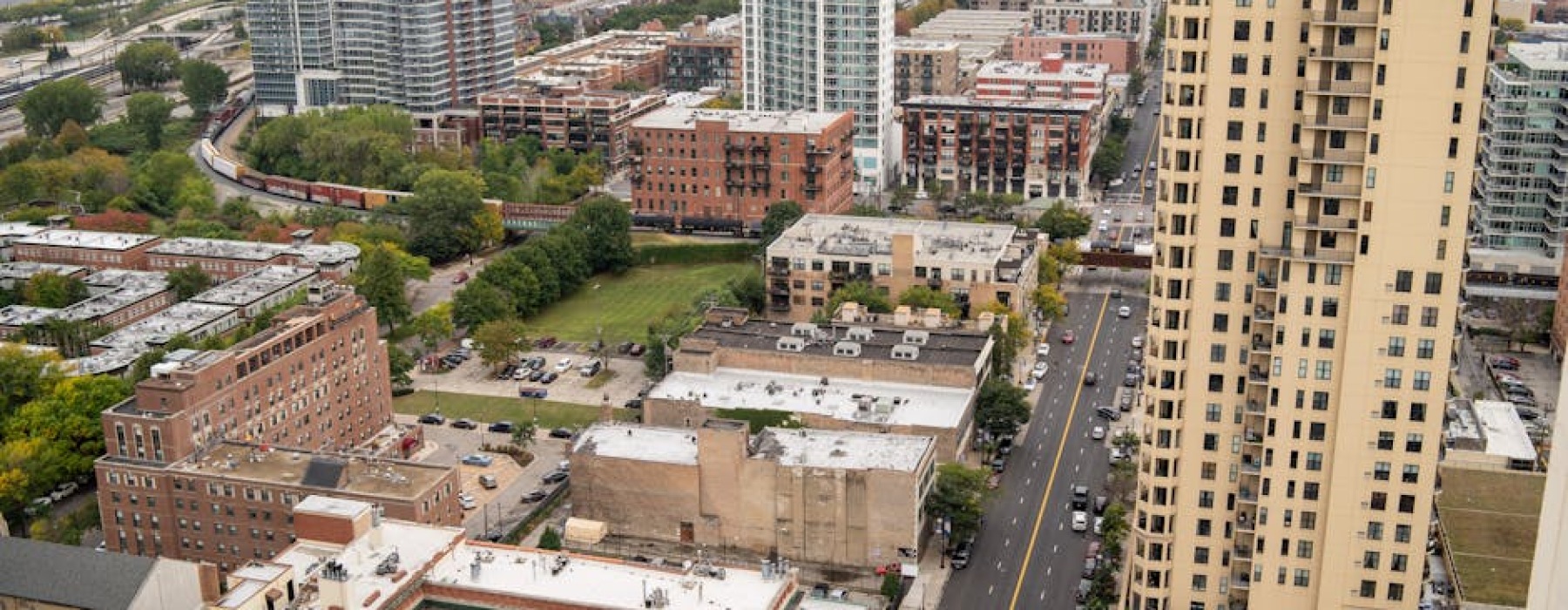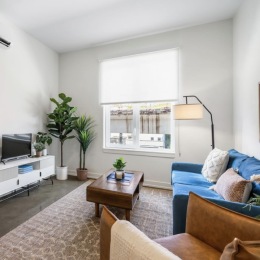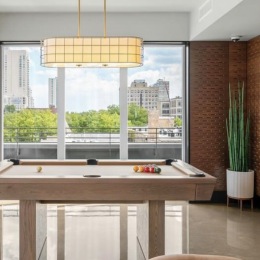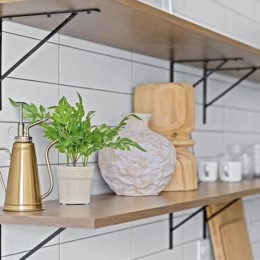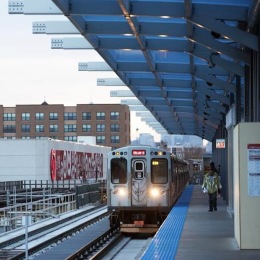Finding Your Perfect Chicago Neighborhood
Looking for a Chicago neighborhood living guide? Chicago's 77 distinct neighborhoods offer something for everyone, from lakefront living to cultural hubs. Here's what you need to know:
- North Side: Dense, walkable areas like Lincoln Park and Lakeview with excellent transit
- South Side: More space, historic districts like Hyde Park, diverse communities
- West Side: Trendy spots like West Loop and Logan Square, rapidly developing
- Downtown/Loop: High-rise living, cultural attractions, business district
Chicago has always been a city of neighborhoods. Each of the 77 officially designated community areas has its own distinct character, history, and vibe. Whether you're relocating for work, education, or simply seeking a change of scenery, understanding the unique personality of each neighborhood is essential to finding your perfect home.
From the busy energy of River North to the tree-lined streets of Lincoln Park, the artistic spirit of Pilsen to the academic atmosphere of Hyde Park, Chicago's neighborhoods span a remarkable spectrum of experiences. These communities aren't just places to live—they're vibrant ecosystems with their own cultural institutions, dining scenes, architectural styles, and community traditions.
"Chicago is widely known as 'The City in a Garden,' yet offers much more than iconic deep-dish pizza and towering skyscrapers," notes one local guide. This diversity is what makes Chicago special, allowing residents to find exactly the right spot that matches their lifestyle, budget, and priorities.
As you begin your search for the perfect Chicago neighborhood, consider what matters most to you: Is it walkability and public transit access? Cultural amenities and nightlife? Family-friendly parks and schools? Affordable housing options? The architectural character? Each neighborhood excels in different areas, and knowing your priorities will help you narrow your focus.
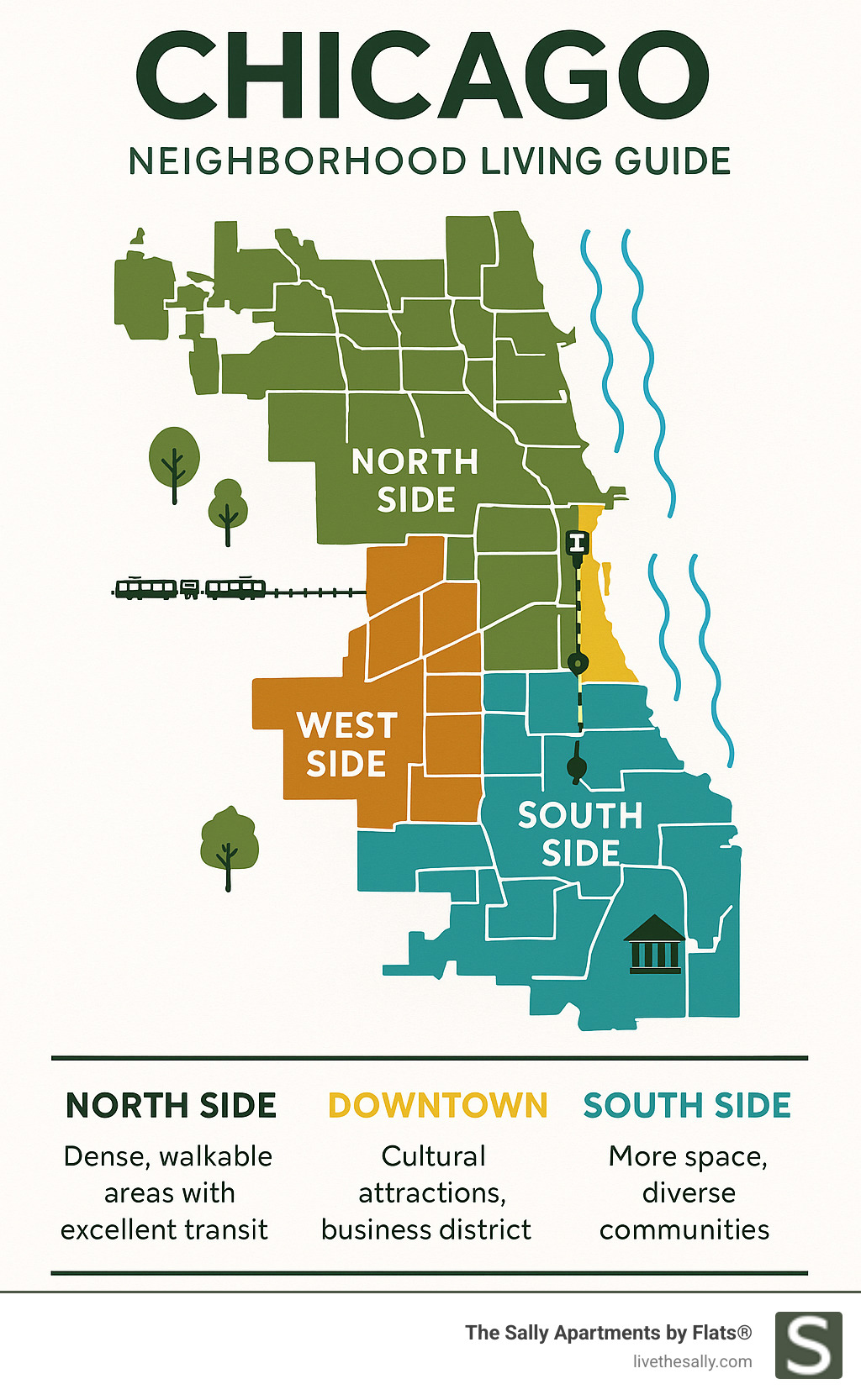
Chicago Neighborhood Living Guide Essentials
Chicago isn't just a city – it's a magnificent patchwork of 77 distinct neighborhoods, each with its own personality and charm. These officially designated community areas were established back in the 1920s by University of Chicago social scientists who wanted to create consistent boundaries for tracking demographics and city planning. What's remarkable is how these boundaries have remained largely unchanged for a century, giving Chicago neighborhoods their enduring identities.
When exploring the Chicago neighborhood living guide, you'll notice the city naturally divides into four main regions: North Side, South Side, West Side, and Downtown/Central. Each offers a completely different flavor of Chicago living!
What Defines a Chicago Neighborhood?
Chicago's neighborhoods tell the story of America itself – waves of immigration, industrial booms and busts, and cultural evolution. While the city's famous grid system (thank you, James Thompson, circa 1830!) provides the physical framework, it's really the people who've given each area its special character.
The neighborhood names often reveal fascinating origin stories. Andersonville celebrates its Swedish roots, while Pilsen transitioned from Czech to Mexican influence over generations. And did you know Old Town wasn't always "old"? Early German settlers grew so many cabbage fields there that locals called it the "Cabbage Patch" before it became the charming historic district we know today.
The Great Chicago Fire of 1871 dramatically reshaped neighborhood development. After the devastating blaze, wooden buildings were banned in the central city, pushing wood-frame construction to outer areas like Andersonville. This pivotal moment created distinctive architectural styles that still define different parts of the city.
While official street boundaries exist on maps, longtime Chicagoans often have their own opinions about where neighborhoods begin and end. These "folk boundaries" can spark spirited debates among locals who feel strongly about their neighborhood identity!
Chicago Neighborhood Living Guide: North, West, South, Downtown
| Region | Density | Green Space | Transit | Notable Features |
|---|---|---|---|---|
| North Side | High | Moderate | Excellent | Lakefront access, walkable, diverse dining |
| West Side | Medium | Moderate | Good | Historic buildings, trendy spots, affordability |
| South Side | Lower | Abundant | Variable | More space, historic districts, universities |
| Downtown | Very High | Limited | Excellent | High-rises, cultural institutions, business hub |
North Side Neighborhoods buzz with energy and walkability. Places like Lincoln Park, Lakeview, and Andersonville offer that perfect urban mix – easy access to public transit, diverse dining scenes, and beautiful lakefront trails. Housing tends to cost more here, but as one resident puts it: "Lakeview gives you all the perks of Lincoln Park with a more relaxed vibe." Young professionals and families particularly love this region for balancing city convenience with green spaces like the actual Lincoln Park.
West Side Neighborhoods have undergone remarkable changes. The West Loop has evolved from industrial meatpacking district to foodie paradise and residential hotspot. Logan Square, Wicker Park, and Bucktown attract creative spirits seeking that sweet spot between trendy amenities and (relative) affordability. Despite gentrification, many of these areas maintain their cultural roots. As one community organizer notes, "Logan Square still celebrates its Mexican and Puerto Rican heritage alongside its newer coffee shops and breweries."
South Side Neighborhoods offer breathing room and often more affordable housing options. Historic areas like Hyde Park (home to the University of Chicago), Bronzeville, and Beverly showcase stunning architecture, strong community bonds, and rich cultural institutions. The South Side boasts incredible green spaces, including Jackson Park, which will soon host the Obama Presidential Center. Many residents cherish the sense of space and community that can be harder to find in denser parts of the city.
Downtown/Central Chicago delivers that quintessential big-city experience. The Loop (Chicago's central business district), River North, Streeterville, and South Loop feature dramatic high-rises, world-class museums, theaters, and shopping. While housing costs typically run higher, the convenience of living at the center of everything – with the entire city's transit system at your doorstep – makes it worthwhile for many urban dwellers.
When considering your ideal Chicago neighborhood living guide essentials, think about which regional characteristics match your lifestyle – the busy North Side, evolving West Side, spacious South Side, or central Downtown experience.
Popular Neighborhood Profiles for 2025

Looking ahead to 2025, Chicago's neighborhood scene continues to evolve, with certain areas capturing the hearts (and real estate dollars) of newcomers and longtime residents alike. Let's take a stroll through some of the city's most vibrant communities that are making waves.
Remember when the West Loop was just a collection of meat-packing warehouses? Those days are long gone! This neighborhood has blossomed from industrial grit into one of Chicago's most coveted addresses. Tech companies have moved in, bringing with them a workforce hungry for the area's award-winning restaurants and stylish loft living. With a perfect Transit Score of 100 and multiple train lines at your doorstep, it's a commuter's dream.
As one local food critic puts it, "West Loop is 'best loop'—where industrial charm meets culinary heaven." Just take a weekend walk down Restaurant Row on Randolph Street and you'll see what all the buzz is about.
Over in Logan Square, historic boulevards create a beautiful backdrop for a neighborhood that effortlessly blends old and new Chicago. The Illinois Centennial Monument stands tall at its heart, while the streets around it pulse with energy from craft coffee shops, indie businesses, and locals pedaling past (it boasts an impressive 93 Bike Score). Despite its trendy reputation, Logan Square has managed to hold onto its cultural roots while welcoming newcomers.
River North offers that quintessential downtown Chicago experience with an extra dose of excitement. Art galleries, design studios, and entertainment venues create a creative atmosphere by day, while the vibrant nightlife scene takes over after dark. Its central location means you're never far from anything in the city—a convenience many residents find worth the premium housing costs.
For those drawn to academic energy and lakefront beauty, Hyde Park delivers both in spades. Home to the prestigious University of Chicago, the magnificent Museum of Science and Industry, and soon the Obama Presidential Center, this neighborhood balances intellectual pursuits with natural splendor. Housing costs remain more reasonable than downtown areas, making it an attractive option for academics, professionals, and families alike.
Up north, Andersonville feels like a small town tucked within the big city. With Swedish roots still visible in its architecture and businesses, this welcoming community is known for its independent shops, LGBTQ+ inclusivity, and pedestrian-friendly streets. "Those old Swedish bakeries might be mostly gone now," a local historian reminisces, "but their spirit lives on in the photographs still hanging in building windows along Clark Street."
Wicker Park's beating heart is its iconic six-corner intersection where North, Milwaukee, and Damen Avenues meet. Historic homes sit alongside cutting-edge boutiques and music venues in this energetic neighborhood that boasts a near-perfect Walk Score of 96. Everything you need is just steps away—from vintage record shops to craft cocktail bars.
And who could forget Lakeview? This expansive neighborhood contains several beloved micro-communities, including Wrigleyville (where Cubs fans make pilgrimage) and parts of Northalsted (formerly Boystown), one of America's most prominent LGBTQ+ districts. With lakefront trails, diverse dining options, and excellent transportation, Lakeview continues to attract residents from all walks of life.
Best for Families
When little ones enter the picture, priorities shift. Suddenly, school ratings and park proximity trump proximity to nightlife. Fortunately, Chicago offers several stellar options for those pushing strollers.
Beverly feels like a secret suburban enclave hidden within city limits. Located on the South Side, this historically Irish neighborhood charms families with its historic homes, top-rated schools, and genuine community spirit. Parents appreciate the easy downtown commute via Metra while kids enjoy the space to run and play.
"What makes Beverly special is that true neighborhood feel," explains a local real estate expert. "Kids still ride bikes down sidewalks, neighbors know each other's names, and Ridge Park's historic fieldhouse hosts everything from basketball leagues to summer camps."
Lincoln Square has mastered the balance between family-friendly comfort and urban convenience. Its charming main street feels plucked from a smaller Midwestern town, while excellent schools and the expansive Welles Park provide everything growing families need. The neighborhood's German heritage lives on in its architecture and annual festivals, creating a distinct sense of place that spans generations.
Other family favorites include North Center with its quiet residential streets lined with bungalows and two-flats, lakefront Edgewater with its diverse community and excellent schools, and Ravenswood where tree-lined streets and community gardens create an urban oasis for families.
Best for Young Professionals
For those climbing career ladders and building networks, certain Chicago neighborhoods offer the perfect blend of work-life integration and social opportunities.
West Loop has become the undisputed champion for young professionals, particularly those in tech, finance, and creative industries. With Google's Chicago headquarters anchoring the neighborhood and countless startups filling renovated industrial spaces, career opportunities abound. After work, colleagues spill into the area's seemingly endless array of restaurants and bars, making networking feel less like work and more like play.
River North delivers that quintessential big-city experience many young professionals crave. High-rise apartments with skyline views, rooftop bars perfect for summer socializing, and an energetic atmosphere create the backdrop for an exciting chapter of life. The minimal commute to downtown offices means more time for everything else.
"What makes River North special is that you're truly in the middle of everything," notes an urban lifestyle blogger. "Those converted warehouse lofts with exposed brick and timber beams give you that urban sophistication, while being able to walk to work in 10 minutes gives you your mornings back."
Just west of downtown, the Fulton River District has transformed from manufacturing center to residential hotspot. On warm days, the sweet scent of chocolate still wafts through the air from the iconic Blommer Chocolate Company—just one of the charming quirks that make this emerging area special.
Best for Students
Chicago's status as an education hub means several neighborhoods cater specifically to those pursuing degrees, offering affordable housing options and amenities that support academic life.
Hyde Park and "student life" have been synonymous since the University of Chicago established itself here in the 1890s. This intellectual powerhouse of a neighborhood is dotted with cozy coffee shops perfect for studying, independent bookstores for course materials and pleasure reading, and affordable dining options that won't break the student budget. The lakefront provides a scenic escape when eyes need a break from textbooks.
Edgewater has become a favorite for students from Loyola University and even those commuting to Northwestern in nearby Evanston. More affordable than many North Side neighborhoods, it offers that perfect student trifecta: reasonable rents, excellent transit via the Red Line, and enough dining diversity to keep meal times interesting on a student budget.
Pilsen in the Lower West Side draws students from the University of Illinois at Chicago and Illinois Institute of Technology with its vibrant Mexican-American culture, eye-catching murals, and housing costs that don't require parental support. "What makes Pilsen special for students," according to a neighborhood guide, "is that authentic cultural experience you just can't get in more polished areas—plus taquerias where you can get an amazing meal for under $10."
Best for Retirees
Chicago's retirement-friendly neighborhoods offer the perfect blend of cultural stimulation, walkability, healthcare access, and community connection for those entering their golden years.
Gold Coast provides luxury living with all the conveniences retirees prioritize. World-class medical facilities are nearby, cultural institutions like the Museum of Contemporary Art are within walking distance, and fine dining options abound for those who've hung up their cooking aprons. While housing costs skew toward the luxury end, many retirees find the amenities and location well worth the investment.
Ravenswood offers a more relaxed pace with its single-family homes, tree-lined streets, and strong community bonds. Retirees appreciate the neighborhood's excellent transit connections that make downtown attractions accessible without the constant noise and bustle. Community gardens provide both beautiful surroundings and opportunities for social connection.
"What makes Lincoln Square so appealing for this chapter of life," notes a retirement living specialist, "is that small-town atmosphere within the big city." Its walkable main street filled with independent businesses means daily errands become pleasant outings rather than chores, while the intergenerational community ensures retirees remain connected to the energy of all life stages.
For those considering a move to Chicago's Uptown neighborhood, The Sally Apartments offers modern luxury living with amenities particularly appealing to those who want to experience the best of Chicago's vibrant neighborhoods while enjoying a welcoming community to call home.
Housing Costs & Types Across the City

Navigating the Chicago neighborhood living guide means understanding the city's wonderfully diverse housing landscape. From cozy bungalows to sleek skyscrapers, Chicago's architectural variety reflects its rich history and vibrant present.
When I first moved to Chicago, I was amazed by the housing options scattered across the city's 77 neighborhoods. You'll find single-family homes dotting the tree-lined streets of Beverly and Edison Park, giving these areas their distinctly residential feel. The classic two-flats and three-flats – those quintessentially Chicago buildings housing 2-3 apartments – stand proudly throughout nearly every neighborhood, offering that perfect middle ground between apartment living and single-family homes.
Wander through Rogers Park or Hyde Park, and you'll notice the charming courtyard buildings with their U-shaped designs embracing green spaces where neighbors gather on summer evenings. History buffs fall in love with the stately greystones and brownstones that add character to Lincoln Park, Old Town, and the historic Bronzeville district.
"Each neighborhood tells its own architectural story," a local preservationist once told me. "The buildings aren't just places to live – they're chapters in Chicago's history."
The West Loop and River North showcase Chicago's industrial past through converted lofts – former factories and warehouses now transformed into spacious, light-filled apartments with exposed brick and timber. Meanwhile, the downtown skyline and lakefront are defined by gleaming high-rise condos and apartments offering breathtaking views of Lake Michigan.
Housing prices reflect this diversity. Recent data shows Lincoln Park and DePaul commanding premium prices (often exceeding $1 million for single-family homes), while neighborhoods like Humboldt Park and Bronzeville offer more affordable entry points for homebuyers. For history enthusiasts, the Chicago Region Map Collection provides fascinating context for how these neighborhoods have evolved over decades.
The topic of gentrification can't be ignored when discussing Chicago housing. Neighborhoods like Logan Square, Wicker Park, and Pilsen have seen dramatic changes as their popularity has grown. "Wicker Park feels overdeveloped due to massive rent increases and trendy expansions," shared one longtime resident who has witnessed the neighborhood's evolution firsthand. These changes bring both renewed vibrancy and legitimate concerns about displacement.
Monthly Rent Snapshot
When apartment hunting in Chicago, your budget largely determines which neighborhoods to explore. The latest 2024-2025 data reveals a tiered rental market for one-bedroom apartments:
Budget-friendly neighborhoods like Albany Park, Avondale, and Rogers Park offer more affordable living while still providing excellent amenities and transit options. Mid-range areas include the family-friendly Lincoln Square, culturally rich Pilsen, and lakeside Edgewater, where you'll find that sweet spot of value and vibrant community life.
Those seeking upscale living gravitate toward upper tier neighborhoods like Lincoln Park and Lakeview, with their boutique shopping and dining scenes. For those wanting the ultimate urban experience, luxury rentals in River North, Gold Coast, and the West Loop deliver high-end finishes and exclusive amenities.
The Sally Apartments in Uptown exemplifies what makes Chicago rental living special – a perfect balance of community, convenience, and comfort in one of the city's most diverse neighborhoods. Uptown residents enjoy easy Red Line access, lakefront recreation at Montrose Beach, and unforgettable nights at historic venues like the Riviera Theatre.
"Uptown's nightlife is a captivating blend of historic charm and modern flair," as a local entertainment guide perfectly put it. The neighborhood's Green Mill Cocktail Lounge, once frequented by Al Capone himself, still serves up some of Chicago's most soulful jazz performances.
Buying vs. Renting Quick Glance
The age-old question – should you buy or rent in Chicago? The answer depends on your life stage, financial goals, and how long you plan to call the Windy City home.
Buying a home means building equity instead of paying someone else's mortgage. Homeowners often benefit from potential tax advantages through mortgage interest and property tax deductions. There's also something deeply satisfying about having the freedom to renovate – whether that's knocking down a wall or simply painting your bedroom that bold color you've always wanted. Plus, homeowners enjoy protection from rent increases in hot neighborhoods.
Renting, on the other hand, offers remarkable flexibility for those whose lives might change direction. Renters appreciate having no maintenance responsibilities when the furnace quits on the coldest day of winter. Many rental communities, especially newer developments, provide access to luxury amenities like fitness centers and rooftop decks that would be cost-prohibitive in a single-family home. Renting also gives you the chance to test-drive different neighborhoods before making a more permanent commitment.
For those valuing both flexibility and amenities, properties like The Sally Apartments deliver the best of both worlds – the comfort and community of home without the long-term commitment of a mortgage. Whatever your housing journey in Chicago, each neighborhood offers its own unique blend of architecture, community, and lifestyle waiting to be finded.
Transportation, Safety & Green Space

Getting around Chicago, feeling safe in your neighborhood, and having access to green spaces are three essential ingredients for a happy city life. The good news? Chicago excels in all three areas, though each neighborhood offers its own unique mix of these crucial elements.
Chicago's transit system is truly the lifeblood of the city. The iconic "L" trains (short for "liftd," though many sections run underground or at street level) connect neighborhoods like a well-designed web, while an extensive bus network fills in the gaps. Add the Metra commuter rail lines reaching into the suburbs, and you've got one of America's most comprehensive public transportation systems.
Transit access varies dramatically by neighborhood, creating distinct lifestyle differences. The Loop boasts an almost perfect Transit Score of 99, with roughly 25 bus routes and seven subway lines converging in this central hub. Just west, the West Loop achieves the rare perfect Transit Score of 100, making car-free living incredibly convenient. For those who prefer two wheels, Logan Square shines with a Bike Score of 93, while Wicker Park ranks as Chicago's second most walkable neighborhood with an impressive Walk Score of 96.
"I sold my car six months after moving to Chicago," shares one West Loop resident. "Between the L, buses, bike lanes, and rideshares, I realized I was spending hundreds each month on a vehicle I rarely used."
When it comes to safety, Chicago neighborhoods present a complex picture that can't be reduced to simple statistics. While crime data provides one perspective, the lived experience often differs significantly from what the numbers suggest. Many factors influence both actual safety and perceptions of safety: community engagement, local business investment, street lighting, police presence, and neighborhood design all play important roles.
Neighborhoods like Lincoln Park, North Center, and Edison Park consistently rank among the city's safest areas, combining strong community ties with strategic policing and economic stability. However, many neighborhoods with challenging reputations contain perfectly safe sections alongside areas requiring more caution. Learning the local landscape from current residents provides insights that statistics alone cannot capture.
True to its motto "Urbs in Horto" (City in a Garden), Chicago offers an impressive 8,800 acres of parkland spread across more than 570 parks. Perhaps most remarkable is Chicago's lakefront—26 miles of public shoreline that belongs to everyone, thanks to visionary urban planning that preserved the entire lakefront for public use. From neighborhood pocket parks to vast urban greenspaces, Chicago's commitment to outdoor recreation spaces sets it apart from many other major cities. More info about Amenities
Public Transit Overview
Chicago's transit system centers around the Loop, with train lines radiating outward like spokes on a wheel. The CTA's color-coded train lines create a visual map that's easy to steer once you understand the basics:
The Red Line runs north-south along the lakefront from Howard Street to 95th Street, connecting diverse neighborhoods from Rogers Park to Roseland. The Blue Line connects O'Hare Airport to downtown and continues west, making it invaluable for travelers and West Side residents alike. The Brown Line loops through North Side neighborhoods like Lincoln Park and Lakeview, while the Green Line serves West Side and South Side communities. The Orange Line connects Midway Airport to downtown, the Pink Line serves Near West Side neighborhoods, the Purple Line provides express service from Evanston with local North Side stops, and the Yellow Line connects Skokie to the Howard terminal.
Strategic transfer points between these lines allow for efficient travel throughout the city. The CTA offers various fare options, including single rides, day passes, and monthly unlimited passes that can significantly reduce transportation costs for regular riders.
Living near transit, like at The Sally Apartments in Uptown with its proximity to the Red Line, can transform your daily experience. Residents can reach downtown in approximately 20 minutes without the stress of driving or parking, making spontaneous trips to museums, theaters, and lakefront attractions remarkably convenient.
Safety Insights by Area
When evaluating neighborhood safety in Chicago, smart residents look beyond headlines to understand the nuances that statistics alone don't capture. Official crime data (available through the Chicago Data Portal) provides one lens, but equally important are factors like community policing initiatives, street activity patterns, local business investment, and—perhaps most valuable—perspectives from current residents.
Many of Chicago's safest neighborhoods combine several key elements: active community organizations, strategic policing approaches, well-maintained public spaces, and thriving local businesses that create natural street surveillance. Areas like Lincoln Park, North Center, and Edison Park consistently perform well on safety metrics, though they represent different price points and lifestyles.
It's worth noting that neighborhoods are rarely uniformly "safe" or "dangerous"—most contain specific areas that feel quite secure alongside blocks that might require more caution. This is where local knowledge becomes invaluable. Speaking with current residents and visiting at different times of day can provide insights that no crime map or statistics can fully convey.
For personal safety in any neighborhood, experienced Chicagoans recommend common-sense practices: stay aware of your surroundings (which means occasionally looking up from your phone), travel in groups when possible at night, use well-lit and populated routes, and trust your instincts if something feels off.
Parks, Trails & Lakefront
Chicago's exceptional park system offers year-round recreation, respite from urban intensity, and gathering spaces that build community connections. These green spaces aren't just amenities—they're essential threads in Chicago's urban fabric.
Lincoln Park, the city's largest at 1,208 acres, stretches along the lakefront from North Avenue to Ardmore Avenue. This magnificent green space includes a free zoo, nature museum, conservatory, multiple beaches, harbors, and athletic facilities. On summer weekends, its meadows transform into impromptu festival grounds with picnics, sports leagues, and cultural celebrations happening simultaneously.
The 606 (Bloomingdale Trail) represents Chicago's innovative approach to creating new green space in dense urban environments. This liftd linear park, converted from an abandoned railway line, connects four neighborhoods—Wicker Park, Bucktown, Humboldt Park, and Logan Square—providing both recreation space and an alternative transportation corridor for walkers and cyclists.
Jackson Park on the South Side spans more than 500 acres and houses the Museum of Science and Industry along with the future Obama Presidential Center. Its historic Wooded Island, designed by Frederick Law Olmsted for the 1893 World's Columbian Exposition, offers a peaceful nature sanctuary surrounded by urban life.
Downtown, Millennium Park and Grant Park form Chicago's magnificent "front yard," hosting major events, showcasing public art (including the famous Cloud Gate "Bean" sculpture), and providing essential green space amid the urban landscape.
Perhaps most beloved is Chicago's lakefront trail, running 18 miles along Lake Michigan and connecting neighborhoods from South Shore to Edgewater. This multi-use path serves as the city's shared recreational backbone, where runners, cyclists, rollerbladers, and walkers enjoy breathtaking views of both the skyline and the vast inland sea that is Lake Michigan.
Residents at The Sally Apartments enjoy enviable access to both Lincoln Park and the lakefront, as well as neighborhood gems like Graceland Cemetery—a historic Victorian-era cemetery that doubles as a beautiful arboretum and peaceful retreat from city life.
How to Choose & Move Smoothly
Finding your ideal Chicago neighborhood requires a systematic approach, combining research with on-the-ground exploration. Here's how to steer the process:
5-Step Neighborhood Decision Checklist
Define your lifestyle priorities: Do you value nightlife and dining options? Quiet, tree-lined streets? Cultural amenities? Family-friendly resources? Make a list of your non-negotiables.
Establish your commute parameters: How long are you willing to commute? Which transit lines are most relevant to your workplace? Consider testing potential commutes during rush hour.
Set a realistic budget: Chicago neighborhoods vary dramatically in cost. Be honest about what you can afford, including rent/mortgage, transportation, and typical lifestyle expenses in each area.
Evaluate future growth potential: Research upcoming developments, transit improvements, and business investments that might affect neighborhood character and property values.
Trust your gut feeling: After researching and visiting neighborhoods, pay attention to how each area makes you feel. Can you picture yourself shopping at the local grocery store, exercising in the park, or becoming a regular at the corner café?
"It's easy to mix up Chicago's neighborhoods—there are 77 districts and countless communities, so if you're a neighborhood noob, don't worry, we'll explain the basics," notes one local guide. Taking time to explore different areas before committing can save headaches later.
Moving Day Tips & Resources
Once you've chosen your perfect Chicago neighborhood, these tips can help ensure a smooth transition:
Before Moving:
- If renting, understand Chicago's landlord-tenant ordinance, which provides strong protections for renters
- For street parking, research permit zones and requirements in your new neighborhood
- Schedule utilities transfer well in advance (ComEd for electricity, Peoples Gas for natural gas)
- Change your address with USPS at least two weeks before moving
During Moving:
- Be aware of Chicago's parking regulations for moving trucks
- In some neighborhoods, you may need to post "No Parking" signs (available from your alderman's office) to reserve space for a moving truck
- Many Chicago buildings have specific moving hours and elevator reservation requirements
After Moving:
- Register to vote at your new address
- Get a Chicago Public Library card (a wonderful free resource)
- Join neighborhood Facebook groups or community organizations to meet neighbors
- Explore local businesses to establish your "regular" spots
For those moving to Uptown Chicago, The Sally Apartments offers resources to make your transition seamless. Our on-site team can provide neighborhood recommendations, moving day assistance, and connections to local services.
Frequently Asked Questions about the Chicago Neighborhood Living Guide

What is the fastest-growing Chicago neighborhood in 2025?
The West Loop remains Chicago's growth champion in 2025, changing from industrial grit to urban chic with remarkable speed. Cranes dot the skyline as developers convert old warehouses into luxury lofts and restaurants.
Right next door, Fulton Market (technically part of the West Loop) continues pushing northward with gleaming residential towers replacing former meatpacking facilities. The South Loop is experiencing its own renaissance, particularly around McCormick Place and the historic Motor Row district where new life breathes into vintage buildings.
Logan Square keeps evolving with transit-oriented developments sprouting near the Blue Line, while Uptown enjoys a vibrant rebirth centered around its legendary entertainment venues and excellent transit connections.
The Sally Apartments proudly contributes to Uptown's renaissance, offering residents front-row seats to this neighborhood's exciting cultural evolution and community growth.
How many official neighborhoods does Chicago have, and why 77?
Chicago's famous 77 community areas weren't chosen randomly—this number was established by University of Chicago sociologists in the 1920s who wanted consistent boundaries for studying the city. They carefully divided Chicago into areas sharing similar economic, social, and physical characteristics.
The official count remains 77, but Chicago's neighborhood identity is far more complex. Many community areas contain multiple sub-neighborhoods with distinct personalities. Take Lake View, for instance—within this single official area, you'll find Wrigleyville (home to the Cubs) and portions of Boystown with entirely different vibes.
Chicago's neighborhood map continues evolving as communities develop new identities. Some urban experts hint that the city might soon recognize a 78th official neighborhood as developing areas establish their own unique character. The borders between neighborhoods often blur in residents' minds, creating friendly debates about where exactly one neighborhood ends and another begins.
Which Chicago neighborhood living guide metrics matter most—price, transit, or vibe?
When choosing your perfect Chicago neighborhood, what matters most depends entirely on your personal priorities and lifestyle needs. It's like a three-way balancing act between your wallet, your commute, and your heart.
Price becomes your North Star when you're working with tight budget constraints or saving aggressively for other goals. It might also take priority when specific housing features—like that second bedroom for your home office or extra bathroom—stretch what you can afford.
Transit takes center stage for car-free Chicagoans or those who dread winter driving on snowy streets. If your job demands reliability, being near multiple transit options provides peace of mind when one line experiences delays. Many residents happily trade square footage for the freedom of a quick walk to the "L".
Vibe wins the day when you're seeking a specific lifestyle or community connection. Maybe you crave the energy of street festivals and sidewalk cafes, or perhaps you're drawn to tree-lined streets where neighbors chat from their porches. The right neighborhood feel can make even a smaller apartment feel like home.
"When relocating to Chicago, trust your gut about which neighborhood feels right," local relocation specialists often advise. "The perfect neighborhood is one where you instinctively slow your pace while walking down the street, noticing details and feeling a sense of belonging."
For newcomers to the Windy City, many long-time residents recommend prioritizing location over extra space or fancy amenities. You can always upgrade your living space later, but falling in love with a neighborhood that doesn't fit your lifestyle often leads to a quick and costly move.
Conclusion
Chicago truly lives up to its reputation as a city of neighborhoods, each with its own heartbeat, history, and character. This Chicago neighborhood living guide merely scratches the surface of what awaits you across these 77 distinct communities.
There's something magical about finding your perfect Chicago neighborhood—that moment when you're walking down a tree-lined street or grabbing coffee at a corner café and suddenly realize, "This is home." It might be the architecture that captures your heart, the local businesses that welcome you, or simply the feeling of belonging among neighbors who share your vibe.
Don't rush this journey. Spend weekends exploring different areas, chatting with locals at neighborhood festivals, and imagining your daily routines in each potential home base. The city reveals itself differently in each season, so consider visiting potential neighborhoods during different times of year if possible.
For those drawn to Uptown's unique blend of historic character and modern energy, The Sally Apartments offers the perfect home base. Our community captures everything that makes this neighborhood special—the architectural beauty, the cultural diversity, and the perfect balance of urban convenience with neighborhood charm. With thoughtful amenities like our stunning rooftop terrace where you can take in city views, and pet-friendly features including a dedicated dog run and pet spa, we've created spaces that truly improve Chicago living.
Whether you choose the artistic energy of Pilsen, the lakefront beauty of Hyde Park, the trendy vibe of Logan Square, or the historic elegance of Bronzeville, you're becoming part of Chicago's storied tradition of strong, proud neighborhoods. Each community contributes a unique chapter to the city's ongoing story—and now your story becomes part of that rich mix too.
Welcome to Chicago—where your neighborhood isn't just where you live, it's how you live.
Ready to experience Uptown living at its finest? Explore our neighborhood to find what makes this community special, or schedule a tour to see The Sally Apartments for yourself.
